- Trusted by Over 2000 Schools Nationwide
- Top-Rated PD Provider ★★★★★ 4.77
- Save with our Kits & Packages – Shop Now! →
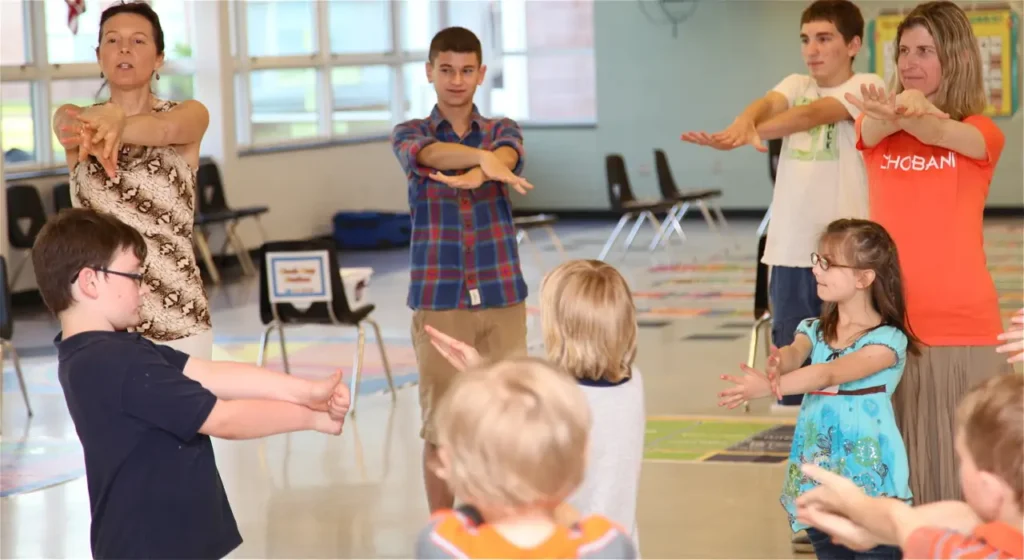
What are cross-lateral movements? Are they the same as cross crawl exercises? What is the midline of the body? Why is crossing the midline of the body during activities important? Learn about the science behind these valuable movements and their power in education. Plus, we’re sharing some of Math & Movement’s cross-body movements and explaining how they boost learning.
Cross-lateral movements are any actions that require coordination from both sides of the body. People also refer to them as cross crawl movements or exercises. These actions involve opposite sides of the body working together to perform a calculated motion.
Crawling is one of the earliest cross-lateral movements humans perform in life. A baby’s leg will move forward while the opposite arm moves forward. Cross-lateral movements involve limbs on one side of the body doing something different than the limbs on the other side of the body.
Cross-lateral movements, or cross crawl exercises, also describe any motion that involves crossing the midline of the body. Next, we’ll officially define the midline of the body. But for now, think of these motions as one side of your body crossing over to the other. In the Math & Movement program, we refer to these motions as cross-body movements.
Movement isn't just for recess
Want to get started with movement-based learning right now? Enter your email to get our training manual with over 250 active math movements. No materials necessary!
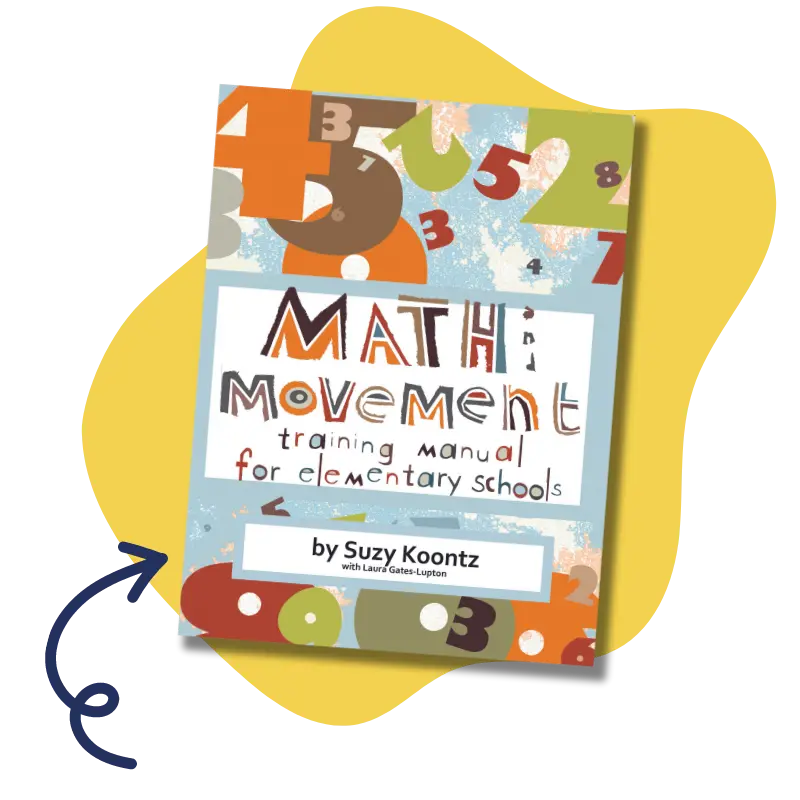
See how simple adding movement can be!
So, what exactly is the midline of the body? While standing, picture an imaginary vertical line separating your body into two halves. The line would pass through your nose, your belly button, and between your legs to the floor. This is the midline of the body.
The brain is divided into two sides or “hemispheres.” The left hemisphere controls the right side of the body, and the right hemisphere controls the left side of the body. Exercises that involve crossing the midline of the body work both sides of the brain at the same time.
The two sides of the brain talk to each other through the corpus callosum. This thick band of nerve pathways acts as a bridge between them. The corpus callosum lets the two sides of the brain share information and work together.
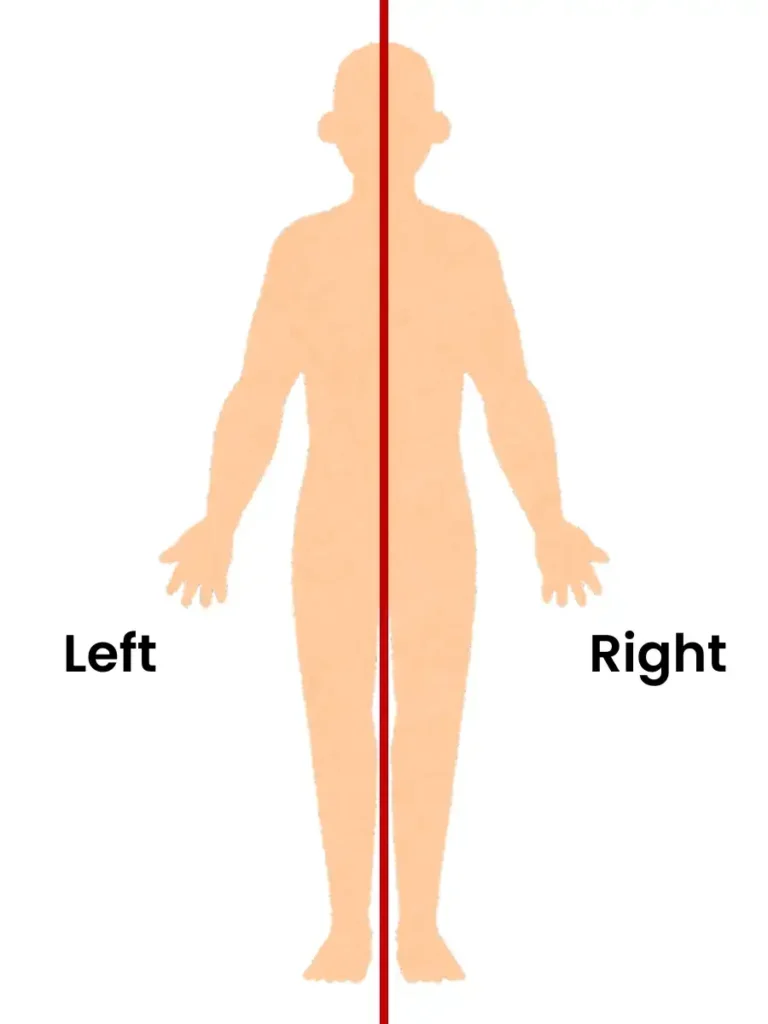
Cross-lateral movements are unique because they activate both sides of the brain. Physical activities that involve crossing the midline of the body strengthen the connection between the two sides of the brain.
Crossing the midline is beneficial to the brain, physical skills, and learning overall. The physical coordination needed for cross-lateral movements helps improve cognitive coordination. Activating both hemispheres of the brain boosts cognitive function, making learning easier.
When both sides of the brain are active, it’s in the prime state to process new information. Therefore, cross-lateral movements can be very helpful for students in the classroom!
Carla Hannaford, PhD, researches how the brain and body work together. She is also the author of Smart Moves, Why Learning is Not All in Your Head. She believes that movement is vital to learning.
“Movement awakens and activates our mental capacities,” Hannaford says. “Movement integrates and anchors new information and experience into our neural networks. Moving while learning increases learning.”
Cross-lateral movements and exercises that cross the midline of the body offer many benefits. Add these midline-crossing exercises to your daily routine to support your children, your students, and yourself.
People see someone as physically coordinated when they sync two parts of their body and both sides of their brain to perform a controlled, precise movement. Improving physical coordination takes practice, and cross crawl exercises can help.
Also, cross-lateral exercises can help improve gross and fine motor skills. Gross motor skills involve using larger muscles for motions like walking. Fine motor skills involve using small muscles for precise movements, like writing.
Improving coordination and motor skills is especially helpful for small children who are still learning how their bodies move. Children can handle everyday tasks more smoothly with a few intentional cross crawl exercises. These tasks include tying their shoes (a fine motor skill) or kicking a soccer ball into a goal (a gross motor skill).
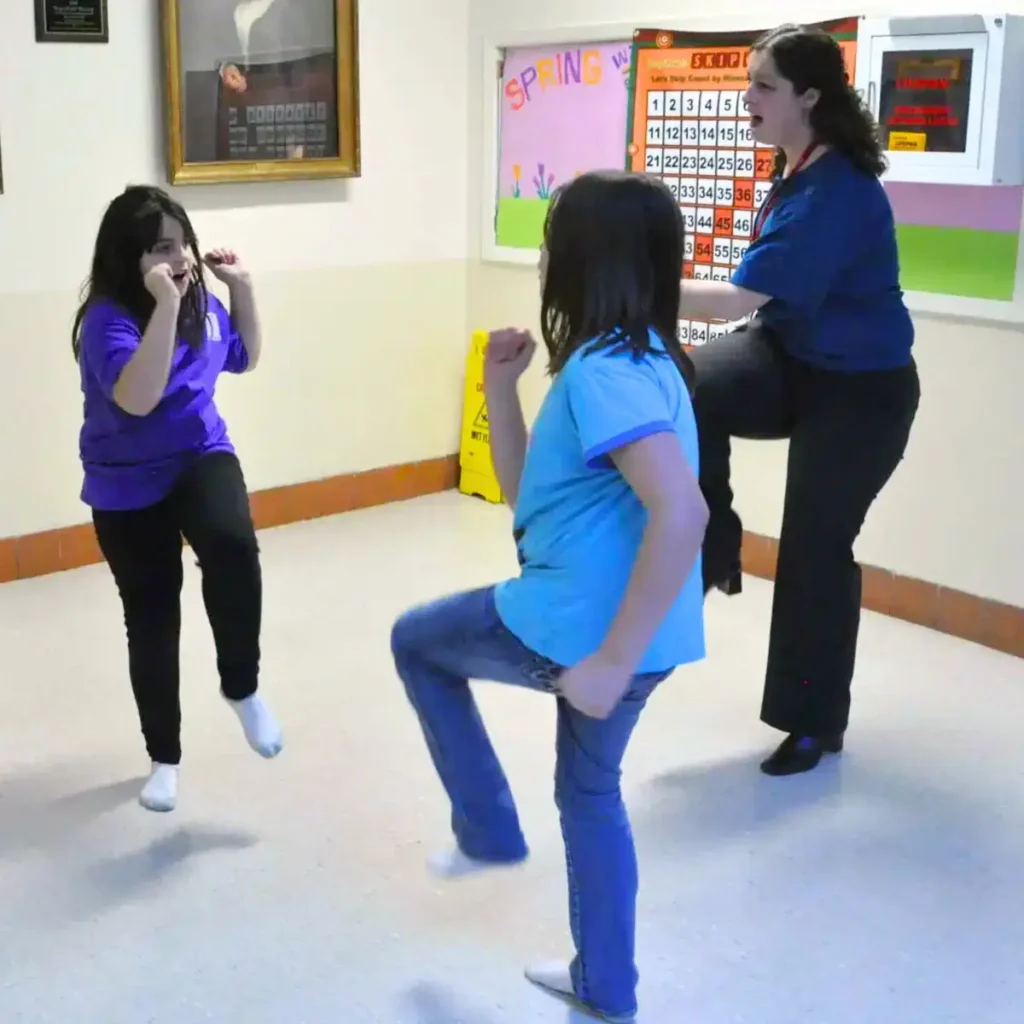
As mentioned earlier, cross-lateral movement activates both sides of the brain. It also wakes up the corpus callosum that connects them. Physical activity boosts blood flow and oxygen levels in the brain. This gets the brain functioning at optimal levels!
Additionally, during exercise, the brain produces a protein called BDNF (brain-derived neurotrophic factor). BDNF improves the function of neurons and encourages their growth.
Cross-body movements keep the neural pathways between both sides of the brain active. This allows the brain halves to share information continually. With all this increased activity, the whole brain is in its prime state for processing information!
Look at these brain scans of students taking a test. The scan on the left shows students’ brain activity after sitting quietly for 20 minutes before the test. The scan on the right shows students’ brain activity after walking for 20 minutes before the test.
Which brain do you think is most ready to retain and recall information? (The active one!)
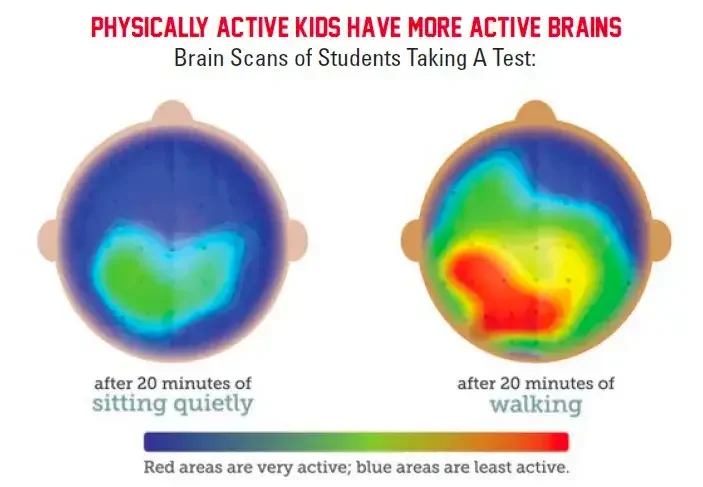
Doing cross-body exercises regularly can help boost self-confidence, too! Children who have the necessary coordination and motor skills to try new activities feel more positive about themselves.
Picture a student who takes dance classes. They practice their moves every day. Naturally, they will feel proud when they can perform a new waltz perfectly!
This confidence boost can really help when trying to learn new academic concepts. Movement-based learning strategies introduce new concepts in a way that’s easy for students to grasp. Lessons are engaging, active, and fun. Plus, movement helps reduce anxiety surrounding academics and school.
Cross-body movements give students that big brain boost for learning. When students realize they can learn new concepts successfully, they will feel more confident about themselves!
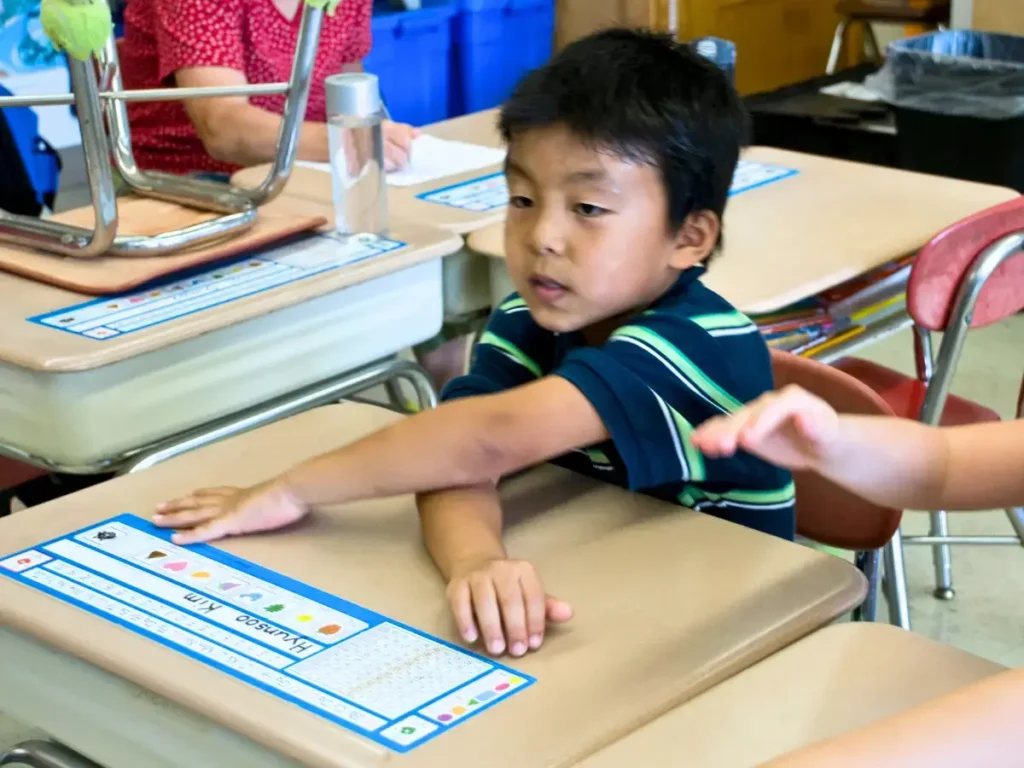
Now you know that cross lateral movements and physical activity are great for the brain, body, and overall learning. Movement-based learning strategies, or kinesthetic learning, implemented in schools can make a huge difference for students.
The traditional classroom often only caters to visual or auditory learners. School days consist of sitting still at desks for a long time. However, many students are kinesthetic learners.
Kinesthetic learners best understand new information when they can feel or touch it. Through movement, these learners can interact with and experience new information. Plus, every student could benefit from more exercise throughout the day.
Click the button below to view our student data. The numbers show how movement-based learning affects test scores, engagement, and overall learning attitudes!
The Math & Movement program is a multi-sensory approach to learning based on research that supports kinesthetic strategies. Our educational activities and products supplement a school’s existing curriculum. One key part of our program is using active math movements throughout the school day.
Active math movements are short physical exercises that allow students to move while simultaneously practicing their math skills. These movements do not require any materials. Many of our active math movements are cross-lateral movements.
Add in these quick cross-body exercises throughout the school day as brain breaks. Alternatively, use them during lessons to help your students remember key concepts. These movements are great for shaking off post-lunch drowsiness. Do a cross-body exercise before a test to reduce stress. These lateral motions are also great for livening up faculty meetings with other teachers!
This movement helps students practice one-to-one correspondence by pretending to climb trees.
Stand up. Reach your left hand up and cross it over to your right side. Count aloud, “One.” Then, reach your right hand up and cross it over the left. Count aloud, “Two.”
Continue the movement and the counting pattern to 10, 20, 50, or 100!
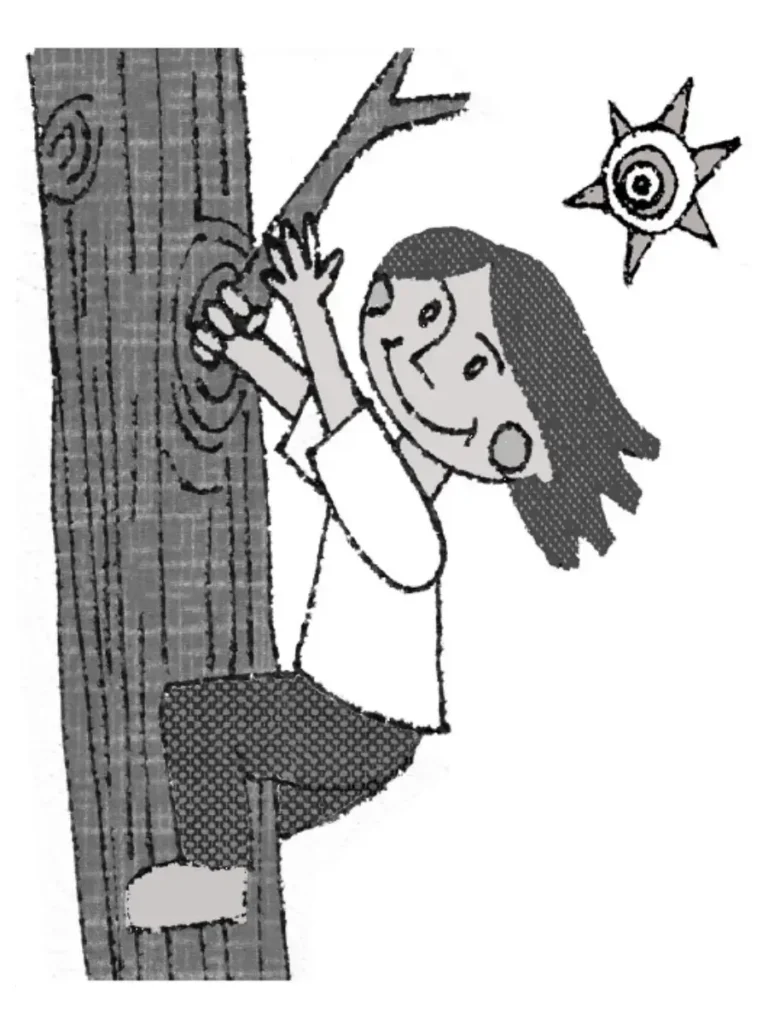
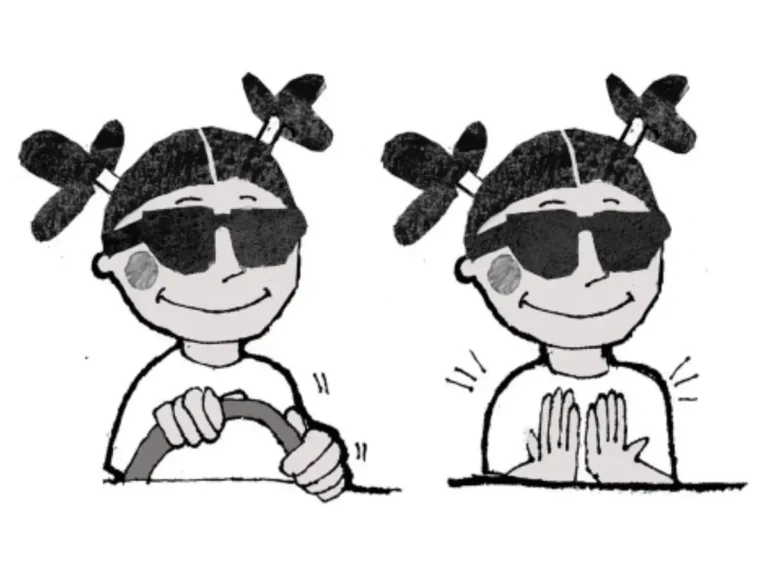
Students can do this movement while sitting or standing. Try it to practice skip counting by 2s!
Pretend to place your hands on the steering wheel. Steer to the left and whisper, “One.” Clap and say “TWO!” loudly.
Steer to the right and whisper, “Three.” Clap and say, “FOUR!” loudly. Continue the pattern.
Allow your students to make sound effects to make the activity even more engaging. For example, say, “Vroom, one! …Vroom-Vroom, FOUR!”
Your students’ imaginations are a great tool to use with these active math movements. Try pretending to be dogs while skip counting by 4s.
Pretend your hands are dog paws! Dig to the left by your foot with both paws and whisper, “One.” Next, dig to the right by your other foot and whisper, “Two.”
Then, dig in front of you and whisper, “Three.” Clap and say loudly, “FOUR!” Continue on to forty.
Again, encourage students to be creative and don’t be afraid to add in a “woof!” or two.
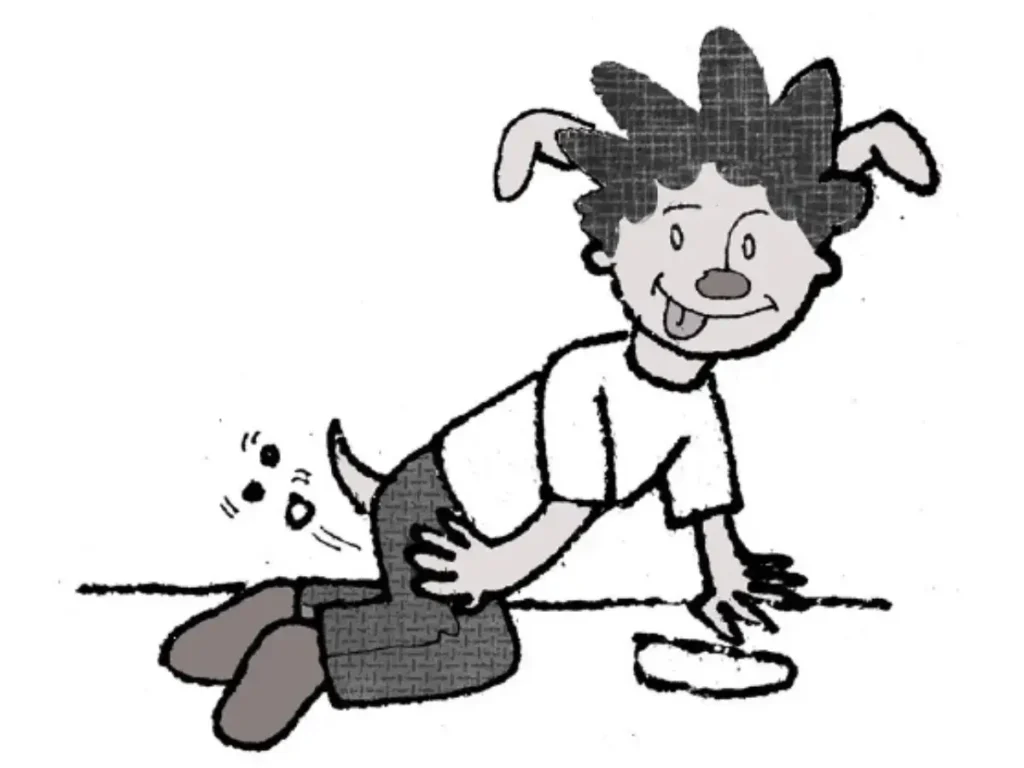
The Math & Movement Training Manual for Elementary Schools has over 250 movements like these to energize students. Simply enter your email in our “FREE GUIDE” box to get your own copy sent to you for free!
Get your students started with cross-lateral movements and watch them learn in a fun and lively way! Plus, your students will reap the benefits of movement-based learning.
Request an Instant Quote for Your School
Create a custom quote to enhance your school’s learning environment with kinesthetic opportunities. Choose from Math & Literacy Kits, Classroom Kits, and individual mats and resources—designed to boost student engagement and achievement. Our materials align with state standards, integrate seamlessly into your curriculum, and include ready-to-use activities for teachers. Plus, save more when you bundle with our Kits! Select your materials and request your quote today!
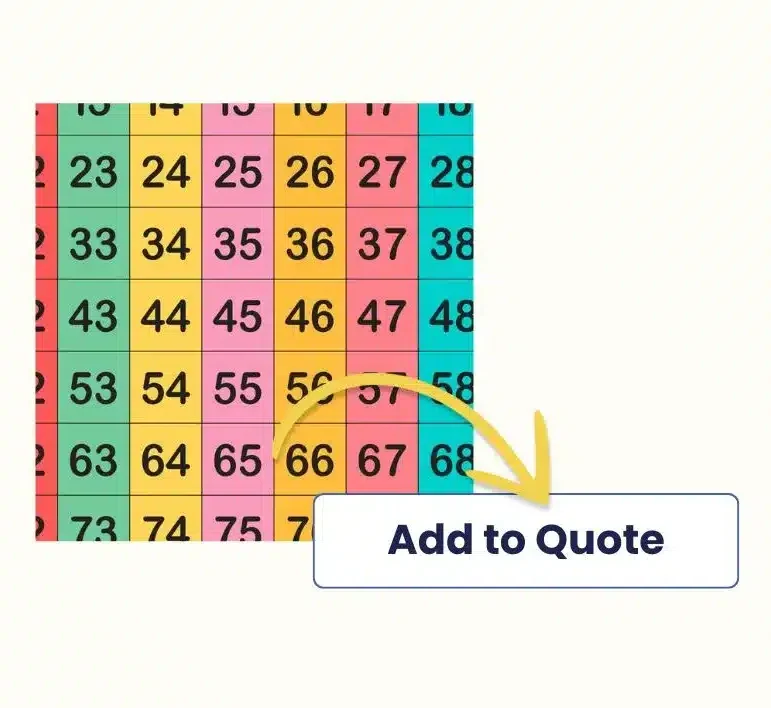
Movement isn't just for recess
Want to get started with movement-based learning right now? Enter your email to get our training manual with over 250 active math movements. No materials necessary!
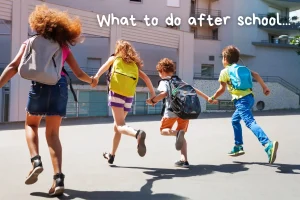
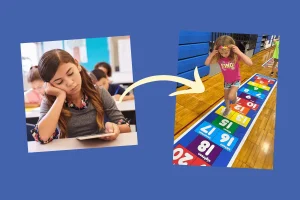
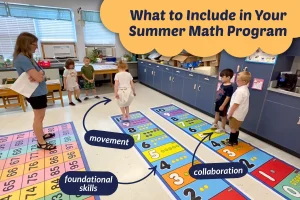
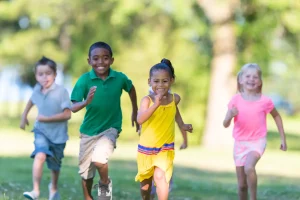
Subscribe to Our Newsletter
We never share or sell your data.
Please leave your email and a quick note for us. We will get back to you soon! In the meantime, here are answers to some of our most common questions:
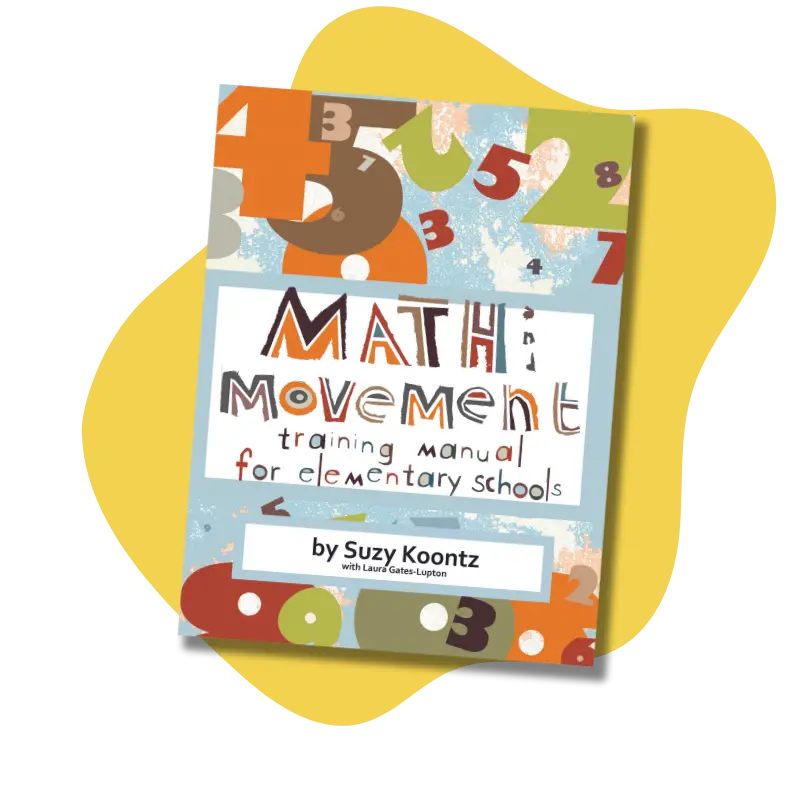
Enter your email to get our training manual with over 250 active math movements. No materials necessary!
We never share or sell your data.